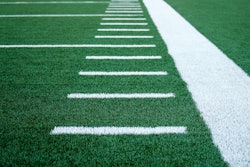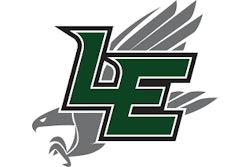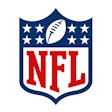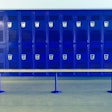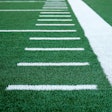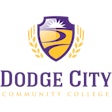Trauma and Tragedy Have Spurred Changes in the Ice Arena Environment, and Everyone from Skaters to Spectators Is Safer For It
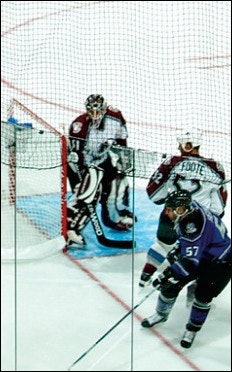
In a National Hockey League game played last January, Michael Pica of the New York Islanders unleashed a legal but no less violent hit on the Montreal Canadiens' Patrick Traverse, whose head crashed into the tempered glass surrounding the rink at Montreal's Molson Centre. The collision and resulting concussion left Traverse unconscious for two minutes and out of commission for 12 games. It also left the Canadiens, who led the NHL in player-games lost to injury during each of the previous two seasons, little choice but to heed the league's recommendation of two months earlier to replace the Molson Centre's rigid dasher boards and seamless protective glass with more-forgiving systems.
Two months later, in Columbus, Ohio, an even greater call for facility change emerged from Section 121, Row S of Nationwide Arena - and suddenly every professional rink operator in North America was listening. That's the seating area from which 13-year-old Brittanie Cecil was enjoying a rink-long view of her first hockey game when a puck shot from the stick of the Blue Jackets' Espen Knutson and deflected by the Calgary Flames' Derek Morris struck Cecil on the left temple, snapping her head backward with enough force to tear her right vertebral artery and induce a fatal blood clot. Though Cecil's represented the first spectator death in the 85-year history of the NHL, the league in June ordered all of its home venues to install protective netting prior to the start of the 2002-03 regular season. Several minor professional leagues soon followed suit.
While facility standards have existed and been adhered to for years, ice arena safety has been a particularly hot topic over the past 12 months. Unforgiving glass systems have been a frequent target of Don Cherry, the former NHL coach and opinionated host of Canadian television's "Coach's Corner," an enormously popular segment aired during weekly "Hockey Night in Canada" broadcasts. Unprotected seating in the wake of the Cecil tragedy garnered eight full pages of coverage in the April 1, 2002, issue of Sports Illustrated, including one article beseechingly titled, "Put Up the Net."
With the NHL's sweeping mandate regarding spectator nets came a new set of rigorous tests that manufacturers needed to pass. Not only did the league examine the strength, durability and fire-resistance (among other attributes) of several brands of netting during the off-season, but fans chimed in with their own, often unfavorable ratings of the nets' visual presence once the season began. Meanwhile, the makers of tempered glass systems have been compelled to strike a delicate balance between what is easy on fans' eyes and what is easy on players' heads and shoulders. As a result, spring-loaded boards and glass systems have been popping up in arenas with increasing regularity, introducing to optically clearer (but heavier) tempered glass the same kind of impact-absorbing sway associated with lighter (though murkier) acrylic panels supported by aluminum or polycarbonate stanchions.
All this attention has had a trickle-down effect, with facility operators at every competitive level forced to at least reconsider their arena components that directly impact fan and player safety.
Netting has long been a staple of community rinks, serving the multiple purpose of protecting seated spectators, pedestrian onlookers and the arena itself. "Most municipal ice arenas are built as small as possible to save on construction costs, which means the walls, seating areas and walkways are as close to the ice as possible," says Al Tyldesley, chair of the Ice Skating Institute's safety committee. "So anything that flies out of the rink, whether it's a puck or a broken stick, becomes a missile. And people walking around the peripheral area are just as subject to injury as somebody sitting in the stands watching the activity."
Safety experts see little excuse for a lack of spectator netting in small facilities, where it typically takes the form of monofilament (essentially fishing line), costs between 30 and 40 cents a square foot and can usually be installed by arena staff. "Get some netting up," urges Dave Wescott, the former operator of a facility with three completely net-enclosed ice sheets and the current director of facility programs for STAR (Serving The American Rinks), a joint educational venture of the U.S. Figure Skating Association and USA Hockey. "A lawyer is going to cost a heck of a lot more."
The costs associated with spectator netting installation escalate substantially with the level of play. The nine models of nylon nets that passed the NHL's first wave of testing are priced between 55 and 90 cents per square foot (due in large part to their fireproofing). How much square footage each professional facility needs varies depending on its own design. The NHL studied architectural drawings of arenas before determining that nets should exhibit a minimum width of 118 feet, stretching from one radius point (where the rink's side boards become rounded at the corner) around the back of the goal to the opposite radius point.
Recommendations regarding netting height come less cut and dried, with lower-bowl coverage serving as the league's lone criterion. Operators had to take into account the depth and slope of their facility's lower-seating bowl, as well as potential view obstructions for fans seated in higher levels whose sightlines intersect with the 118-foot pipe required to suspend the netting curtain from above. In some arenas, staff could be seen during the off-season dangling flagged ropes from catwalks while coworkers in the seats below advised on suitable conduit heights. For some facilities, 20-foot-high nets were deemed safe and unobtrusive. At Denver's Pepsi Center, home of the Colorado Avalanche, the net extends upward a full 100 feet, from the requisite six inches below the top edge of the glass to the building's ceiling structure.
While netting installation in community rinks is typically a one-time endeavor, professional rink operators must remove the netting along with their boards and glass for basketball games, concerts and other events. During a two-week stretch in November, the Pepsi Center had to pull its net out of the way and put it back nine times. "The biggest part of this equation - the cost factor - had nothing to do with the net," says Brian Stang, director of indoor sales for Minneapolis-based rink equipment manufacturer Athletica Inc. "It had everything to do with the rigging system, taking that net up and down."
According to Stang, the process gets really pricey for public buildings, which may have to contract with outside riggers (at as much as $150 per man-hour) to handle the netting. Other facilities have invested thousands of dollars into pulley systems that onsite staff operate themselves. In either case, minor league teams have experienced the greatest economic crunch from the netting mandate. "The market that it has impacted more than anybody is the little guys," Stang says. "I think what's going to happen on the rigging side over the course of this year is that some companies will come to the forefront with more universal systems that are more economical for the 120 professional buildings that aren't NHL venues."
And there's no guarantee that nets covering a rink's ends will serve as a catch-all solution to concerns lingering less than a year removed from Brittanie Cecil's death. "Knowing that we live in a litigious society, the first time somebody on the side gets hit, that person is going to say, 'You're not protecting me like you are the people on the ends,' " says Stang. "Everyone says, 'Well, they're probably going to net the whole damn place pretty soon.' That's a gut reaction, but who knows if it will happen?"
Though it stopped short of mandating a completely net-enclosed rink, the NHL nonetheless instituted for this season a minimum height of 5 feet for glass situated atop side boards. Previously, even as end-rink glass stood a uniform 8 feet, side-mounted glass ranged between 4 and 6 feet, depending on the venue. By keeping more pucks out of seating areas and in play, the change in glass height not only provides spectators more protection, it also improves the flow of NHL games. That said, recent innovations in seamless glass have done even more to bring the game action back up to full speed.
Seamless glass emerged nearly 10 years ago as a favor to fans. The 5/8 -inch-thick tempered glass sits in a 4-inch-deep channel within each dasher board panel without the stanchions required to hold up acrylic systems. Instead, small clips connecting the top of one pane of glass to its neighbors suffice in keeping the entire system erect. The glass itself is less susceptible to marring by pucks, scarring by sticks and yellowing with age than its acrylic counterparts, which also tend to distort views down the ice. It also is less likely to shatter these days, thanks to coatings that increase its strength and prevent countless glass shards from showering the first few rows of seats and the ice surface should a section break. Instead, the glass acts much like a damaged car windshield, exhibiting a spider-web pattern but remaining intact.
But the fans' gain has all too often translated into players' pain. According to one manufacturer, the combined weight of a typical dasher board panel and the tempered glass resting on top of it (at 9 pounds per square foot) can approach 700 pounds. Some compare the barrier to a brick wall. "The players have had to play a different game," says Wescott. "They aren't going into the corners full steam like they used to."
"There has been a lot of talk, from players and trainers especially, about the fact that tempered glass seemed to be so unforgiving, it was affecting the safety of the players," says Dave Dryden, chair of the two-year-old NHL Injury Analysis Panel. "The NHL has for a long time had an injury monitoring system. For the first time, we started to really analyze it."
Of greatest concern were the number of concussions being sustained by NHL players, and seamless glass was identified by the panel following the 2000-01 season as a potential culprit. Rather than ban seamless glass from all venues, the league welcomed the idea of reducing tempered-glass thickness to a half-inch (sparing 200 pounds per pane, by one rink operator's estimate) and remained receptive to experimental alterations to tempered-glass systems. "We don't want it to leave the market, because we think it's a great way to watch a hockey game," Stang says. "The league thinks it's great, too, but the league also recognizes that the players are the product, and we need to protect the players."
The key was getting immobile seamless glass to move, something that Athletica engineers and the conversion staff at one NHL venue managed to accomplish independently through slightly different approaches. Five years after the emergence of seamless glass in 1994, Athletica began producing springloaded dasher boards. No longer frozen into the ice, the boards rest on an ice dam surrounding the playing surface, allowing the full panel to tip backward on a rear-mounted pivot point as an industrial grade spring is vertically compressed. Two springs serve each board. Side boards may tip up to a full inch, while curved radius boards found in the rink's corners may tip three-quarters of an inch. Unlike side boards, radius boards feature not only the floor-mounted pivot springs but horizontal springs that link one board section to its neighbors, stretching on impact.
The company's version of spring-loaded seamless glass debuted at the 2002 Salt Lake Olympics. In this system, tempered glass is allowed to pivot within the dasher board channel through the bending of internal springs. Top-mounted clips feature moving parts and springs, as well, further facilitating the backward movement of the glass. "You're no longer pushing 10 pieces of glass at one time, which the old clip kind of required," says David Battel, Athletica's president and CEO. "Now you push just the one piece. The spring allows each piece of glass to move more independently."
The alternative system, developed by Pepsi Center conversion crew manager Nick Frazier, varies from the pivoting system in that it allows glass to slide backward within the channel. As of this writing, the Pepsi Center system was the only tempered-glass system to pass the NHL's "light hit" forgiveness test, which measures the impact of a 7-pound bag swung into the glass 5 feet above the ice. (Both the Athletica and Pepsi Center systems have passed the league's companion 240-pound "heavy hit" test.)
Rink operators can expect to pay upwards of $200,000 to outfit their facility with both spring-loaded boards and glass, Battel says, adding that many facilities incorporate one or the other or choose a hybrid of tempered glass (along the rink sides) and stanchion-supported acrylic (at the rink ends). Clear polycarbonate stanchions are now used by some facilities instead of aluminum to support either acrylic or glass systems, creating the illusion of seamlessness even though the stanchions aren't transparent.
Spring-loaded board systems designed and priced for amateur use have begun to find their way into prep school arenas, and spring-loaded glass systems now appear in college venues. Whether these innovations will ever reach the community rink remains to be seen. While tempered glass is quite common in community rinks due to its ease of maintenance, the type of game action that makes the glass potentially injurious is less so. "The use of the building has to be the first concern when choosing glass," says Wescott, who combined tempered glass with aluminum stanchions in his own rinks. "Likewise, make sure that the board system fits the operation. Think about what is going to happen in your rink. Who's going to use it. Small community rinks are not the Molson Centre. You don't have NHL players crashing through there."
No doubt, ice arenas can be dangerous places. Whether in use for the fast, sometimes violent, game of ice hockey or to accommodate large groups of recreational skaters of varying skill, the potential exists for arena components to cause injury to participants and onlookers alike. Rink operators at all levels would be wise to follow the lead of NHL officials like Dryden and Dan Craig, the league's facility operations manager, in their ongoing efforts to ensure a safe environment for all ice arena inhabitants.
"Every time Dave and I are together, we go take a look at a rink and say, 'What about this? What about that? How can we make it better?' " Craig says. "We have really good communication with all of the arena operations directors, as well as trainers and equipment managers. Everyone has ideas, and no idea goes untapped."




















